A elaboração de esculturas em madeira decorativa, conhecido como carrancas, foram encontradas na proa dos navios construídos entre os séculos XVI e XIX. Muitas fêmeas retratadas, inumanos, monstros ou animais, mas outros modelos poderão ser encontrados também. Houve ornamentação em barcos e navios em épocas anteriores, no Egito, por exemplo, além de outras culturas do mundo antigo.

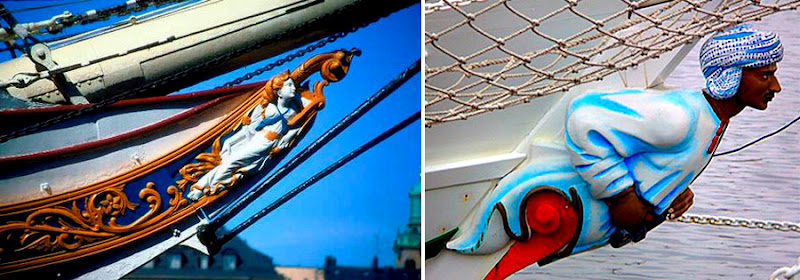
Esta figura de proa do navio foi originalmente datado do período Viking, mas agora é pensado para ser de entre 350 e 650 dC, quando os povos germânicos estavam em expansão na Europa, durante a dissolução do Império Romano do Ocidente (imagem à esquerda abaixo):
A few centuries later, Viking ships often displayed fearsome dragon’s heads on their voyages between around 800 and 1000 AD (middle and right images above).
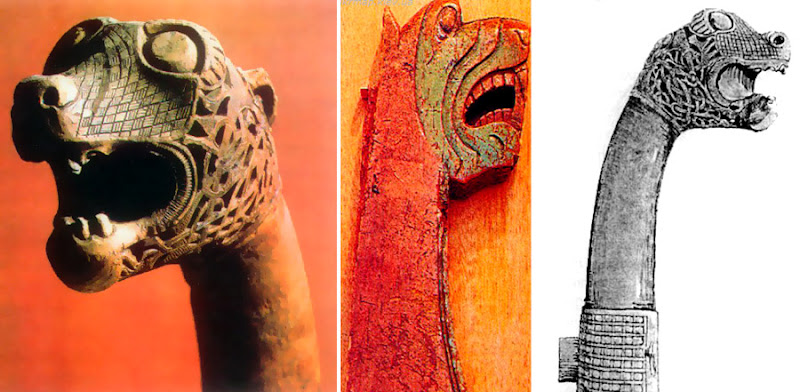
Dutch ships' figureheads: left & middle: "Sjaelland" line ship, 1787; on the right is "Phoenix" from 1811:
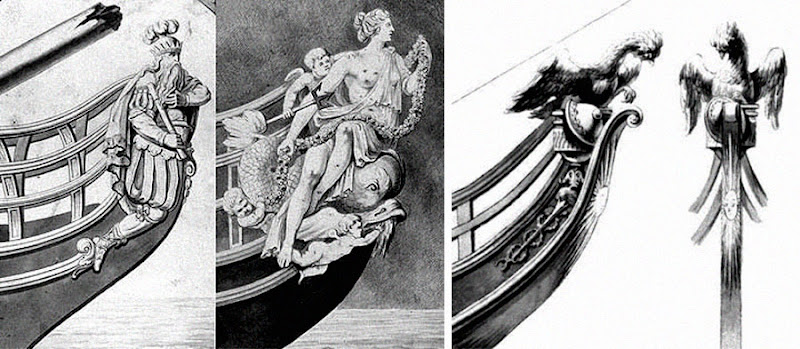
(images via)
However, the general practice of using a figurehead arrived with the development of the ocean going galleons of the 1500’s. Similar to the manner in which pub signs (which we examined in a couple of previous articles here on Dark Roasted Blend) were employed to advertise premises when the majority of the population couldn’t read, ship figureheads were often used to indicate the name of a ship in a much less literate society. They also could serve to display the wealth and social status of the ship’s owner or the might and power of the country, in the case of military vessels.
Various Dutch and Russian figureheads from 1739-1741:
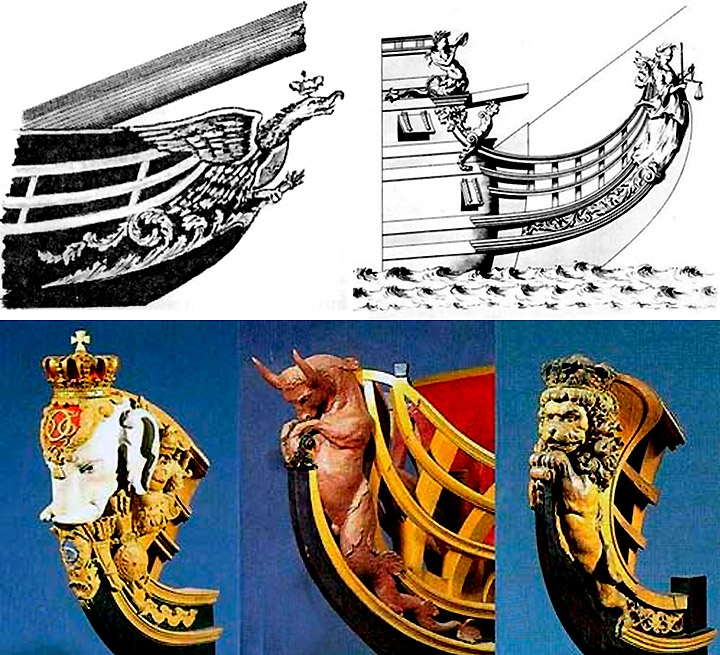
Not just an ornament - a guide to the afterlife!
Figureheads also served as a kind of good luck charm for the ship’s crew. In Germany, Belgium and Holland, it was believed that the ship’s figureheads contained spirits called Kaboutermannekes. These spirits protected the ship and crew from fierce storms, treacherous winds, uncharted rocks, illness or disease, and in the event the ship sank, the spirits would guide the sailors souls to the afterlife. If sailors lost their lives at sea without such protection, it was believed their souls would haunt the sea for all eternity.
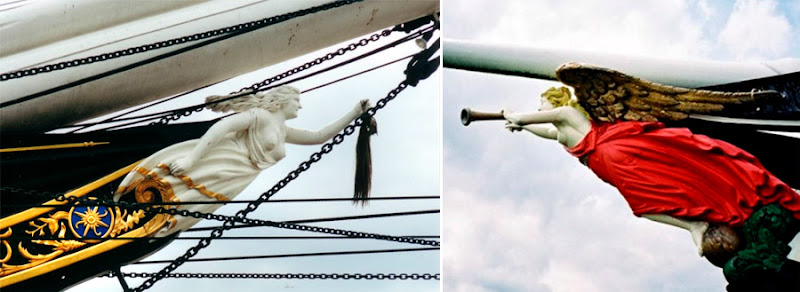
Figureheads became somewhat popular again following the Napoleonic Wars, after having almost disappeared entirely by 1800, but were smaller that the full figure versions that had been popular in previous centuries.
Here’s the bow of Nelson’s flagship, HMS Victory, from the early nineteenth century (left).
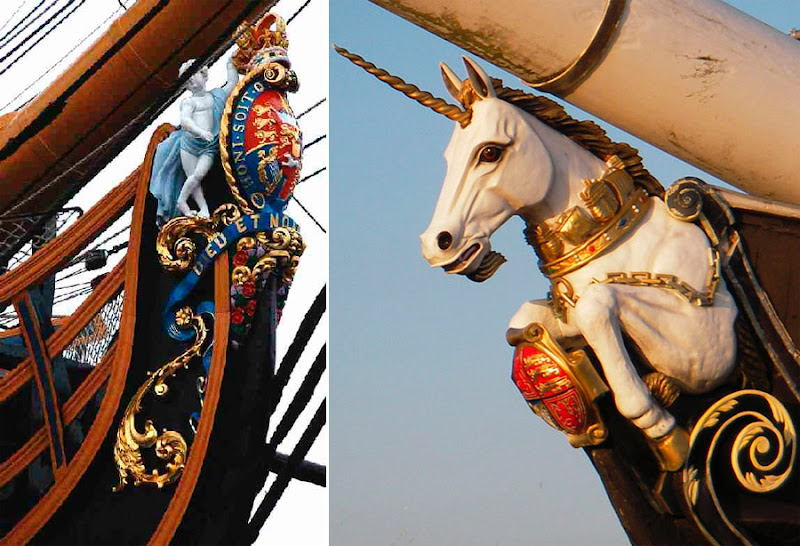
The British frigate Unicorn was launched in 1824 with the striking decoration (shown above right).
Left: Prince Henry the Navigator figurehead from "Sagres II", Portugal, 1937... Right: monk figurehead from Amerigo-Vespucci, 1931:
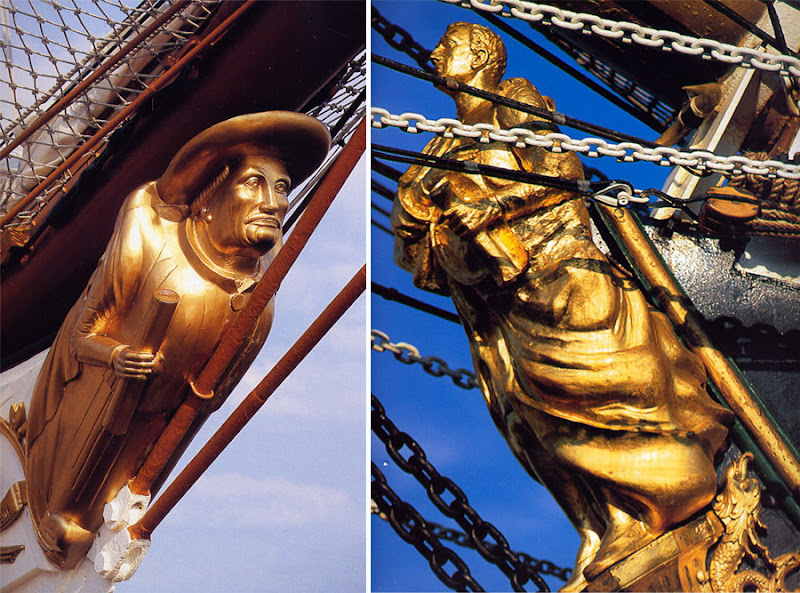

A Tea for Two and a Rub for my Figurehead!
The clippers, which sailed the globe’s trade routes in the mid nineteenth century, usually had full figureheads, but these were usually lightweight versions. Prior to being closed for major restoration, the tea clipper Cutty Sark at Greenwich, London, contained a large collection of ships' figureheads:

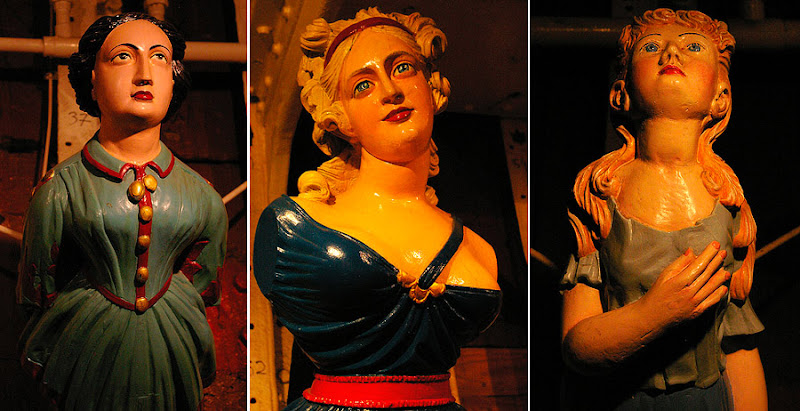
The first steamships sometimes had decorations on their bows, but figureheads mostly died out with the demise of the sailing ship.
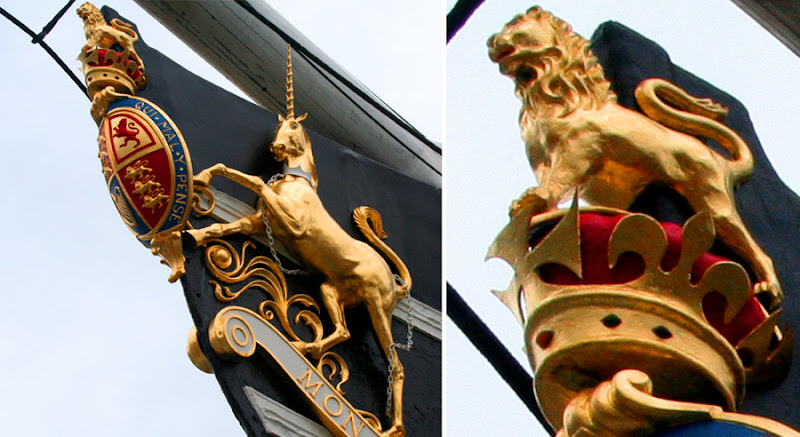
The Royal Navy ship HMS Rodney, launched in 1884, was the last British battleship to have a figurehead, although some smaller British vessels continued to use them until the early years of the twentieth century. Here’s the figurehead of HMS Warrior from the same era (left image):
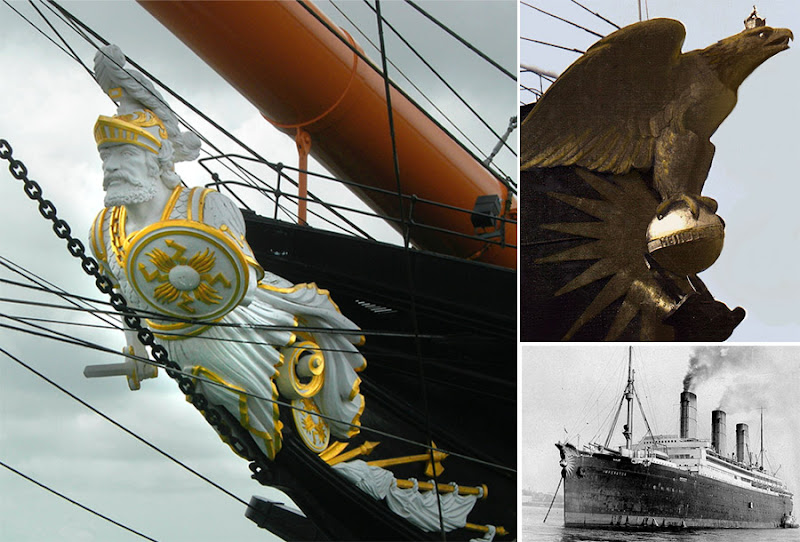
The German ocean liner Imperator, launched in 1912, used a large bronze eagle as a figurehead (see above image on the right). The extra feet of length it provided made Imperator the longest ship in the world at the time, beating the British ship Olympic, a sister vessel of the Titanic.
Figureheads usually depicted human figures, but here we have a lion (below left)... and even King Neptune himself (middle image), whose face seems entirely similar to the figurehead of HMS Ajax, which was built in 1809 and featured in many engagements during the lengthy conflict with Napoleon (below right):

Here’s a sight familiar to residents of, and visitors to, the Canadian city of Vancouver. This carving of a sea dragon, located in Stanley Park, is a replica of the figurehead of the Empress of Japan, which sailed back and forth from Canada’s west coast to Asia from the early 1890’s until 1922.
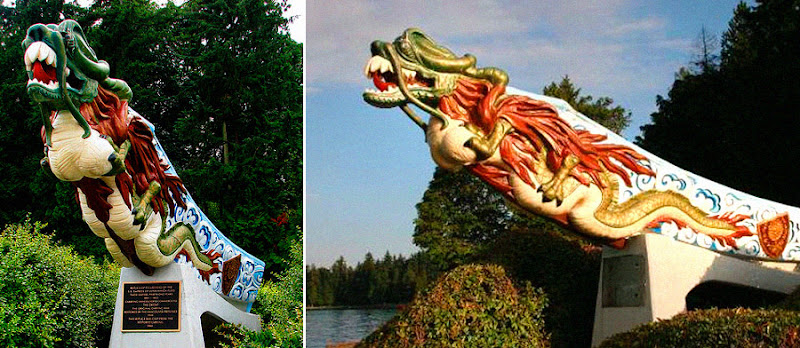
(left image credit Kevin R. Boyd, right image via)
And speaking of Asia, here are some examples of figureheads from Thailand, displayed on barges used by the royal family. This first one dates from the mid-sixteenth century.


